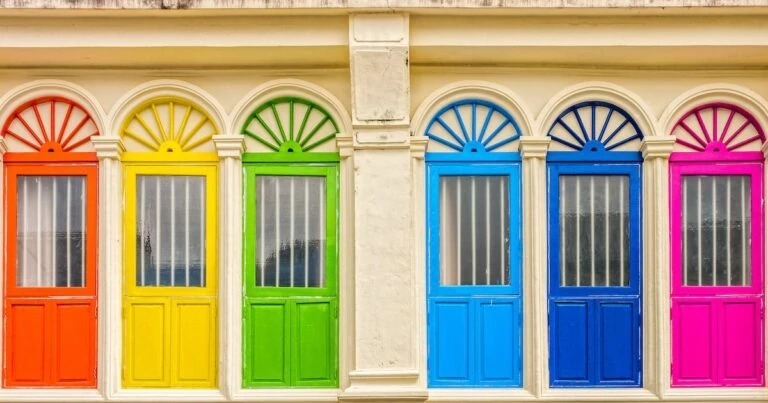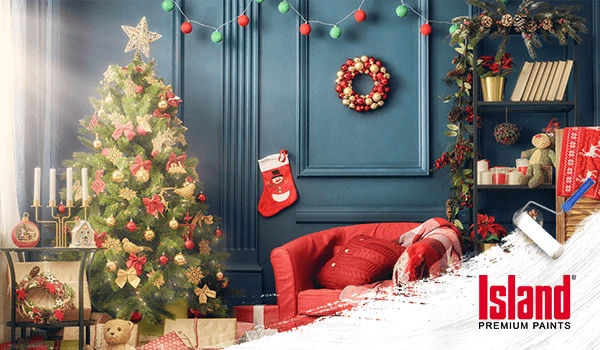Home Decorating Tips


Home Decorating Tips
Color Chaos? Discover Mind-Blowing Secrets of Mixing Paints
Posted on October 18, 2023
Are you planning a makeover for your buildings and commercial space through paint but getting overwhelmed by the extensive range of color options? Don’t let choosing colors become a roadblock; consider it your canvas for creativity instead.
In this guide, we’ll share advice on color mixing. At the end of this read, you’ll learn how to create tints and shades while uncovering some blending techniques.
Importance of Mixing Paint
Mixing paint is crucial to achieving consistent color, maintaining chemical stability, preventing lumps or clumps, ensuring uniform coverage, and minimizing waste. If you don’t mix thoroughly, you’ll risk uneven color and patchy coverage.
Your best bet is a paint mixing attachment that connects with your drill, but if you don’t have one, you can use a stir stick—just be sure to stir for at least 2 or 3 minutes, or until the colors are completely mixed.
Blending Techniques
Blending techniques refer to methods used by painters to seamlessly mix colors on a surface. These techniques are employed to create smooth gradients, transitions, and subtle shifts in color, which can enhance the depth and visual appeal of a wall painting. Here are some common painting blending techniques:
- Roller Blending
This technique is often used for large, flat surfaces like walls and ceilings. After applying a coat of paint with a roller, you can use a roller extension pole to create a seamless and uniform finish. Proper roller technique, such as maintaining a wet edge and using overlapping strokes, helps achieve a consistent appearance. - Brush Blending
Brushes are commonly used for painting trim, corners, and edges where rollers may not reach easily. To achieve smooth blending with a brush, feather out the edges of the paint by lightly brushing over the wet edge of the previously applied paint, creating a seamless transition. - Spray Blending
Spray painting is efficient for large areas and can result in an even finish when done correctly. Professionals often use paint sprayers to apply paint evenly across walls and ceilings. Spraying techniques, such as maintaining a consistent distance from the surface and using overlapping passes, help blend the paint. - Cut-In Blending
Cut-in blending involves carefully painting along the edges and corners of a room or architectural features using a brush or a cut-in tool. This technique ensures that the edges are crisp and that the paint blends seamlessly with the main surface. - Texture Blending
In cases where textured finishes are desired, blending techniques like sponge painting, stippling, or ragging can be used. These methods involve applying paint with various tools to create textured effects on walls and surfaces. - Glaze Blending
Glazing is a technique used to blend paint with a glaze medium, creating translucent and decorative effects on walls. It is often used for faux finishes and decorative painting. - Taping and Blending When working on complex patterns or designs, painters may use masking tape to create crisp lines and edges. After applying the paint and removing the tape, they can blend any visible seams or edges for a smooth finish.
Color Theory and Color Peg
Using a recommended color palette in your painting projects offers several advantages. These recommended palettes have been tested and proven to work harmoniously, saving decorators time and effort in color experimentation. Many paint manufacturers and retailers offer palette recommendations on their websites, making it easy to access the exact colors needed for your artistic endeavors.
In order to prepare your color peg efficiently, you must understand color theory. It is a field of study that explores how colors work together, impact human emotions, and can be used effectively in various disciplines. At its core, it revolves around the color wheel, which organizes colors into primary, secondary, and tertiary categories.
Primary colors, like red, blue, and yellow, cannot be created by mixing other colors. Secondary colors, such as orange, green, and purple, result from mixing primary colors, while tertiary colors arise from combining primary and secondary colors.
Color Harmony
Similarly, understanding color relationships or harmony is essential in color theory. Color harmonies are also relevant in construction and interior design. Selecting the right color harmony can create a pleasing and cohesive look for your construction project. Here are some color harmonies used in construction and interior painting:
- Monochromatic Harmony:
In monochromatic color schemes, you use various shades and tints of a single color. This creates an understated but harmonious look. For instance, using different shades of blue for walls, trim, and accents. - Analogous Harmony:
Analogous color schemes involve using colors that are adjacent to each other on the color wheel. This creates a sense of flow and is often used to create a tranquil atmosphere. To achieve this, use various shades of green and blue in a room. - Complementary Harmony:
Complementary color schemes involve using colors that are opposite each other on the color wheel. This can create a bold and striking look with high contrast. For instance, pairing blue with orange or red with green. - Split-Complementary Harmony:
Instead of using the direct complement, you choose two adjacent colors to the complement. For example, pairing blue with red-orange and yellow-orange. - Triadic Harmony:
Triadic color schemes involve using three evenly spaced colors on the color wheel. This creates a balanced and vibrant look. For example, using red, blue, and yellow together.
Pointers to Achieve Great Results
Select the Right Paint Type:
Determine whether you need interior or exterior paint, as these have different formulations to withstand various environmental conditions.Choose the type of paint based on the surface you’re painting (e.g., drywall, wood, concrete) and the desired finish (e.g., flat, satin, semi-gloss).
Invest in High Quality Paint:
The primary distinction between low-quality and high-quality paint is found in their composition. High-quality paint comprises pigment (20%), solvent (15%), binder (40%), extender (20%), and additive (5%). This premium paint is non-porous, preventing water absorption and allowing it to run off.
Conversely, lower-quality paints readily absorb water, resulting in issues like peeling and bubbling. While high-quality paint may come at a higher initial cost due to its greater pigment and binder content, it proves to be a valuable investment as it reduces the frequency of repainting needs.
Stick with a Single Brand for Consistency
Paint formulas can vary significantly between manufacturers, which means that blending paints from different brands may result in paint that clumps or separates in the container or provides uneven coverage on your walls. To enhance your chances of achieving a seamless mixture, opt for two paints from the same company.
For those seeking a brand that excels at delivering superb textures, consider Island Paint. Explore Island Paint’s popular paint color combination palettes for great color schemes and room design ideas for interiors and exteriors. With an extensive array of colors at your disposal, your projects can effortlessly achieve harmony.
Read expert guidance on the right paint products, plus step-by-step how-tos with Para Sure tips for your home improvement projects. Visit Island Paint’s website today.
References:
https://www.artistsnetwork.com/art-techniques/color-mixing/6-tips-for-color-mixing/
https://www.thisoldhouse.com/painting/21015099/6-tips-for-mixing-your-own-paints
https://www.taindustrialpaints.co.uk/blogs/blog/tips-for-mixing-paints-for-an-even-application
Our Products
Our line of high quality paints and products will give your home or project the vibrancy it needs.
Explore Colors
Ready to explore colorful possibiliies today? View our popular paint colo combination palettes for great color schemes and room design ideas for interior and exteriors.



